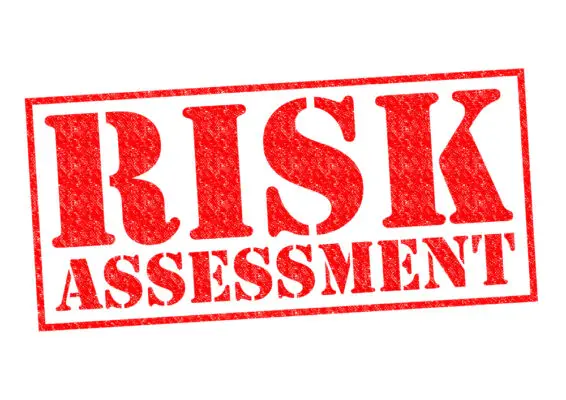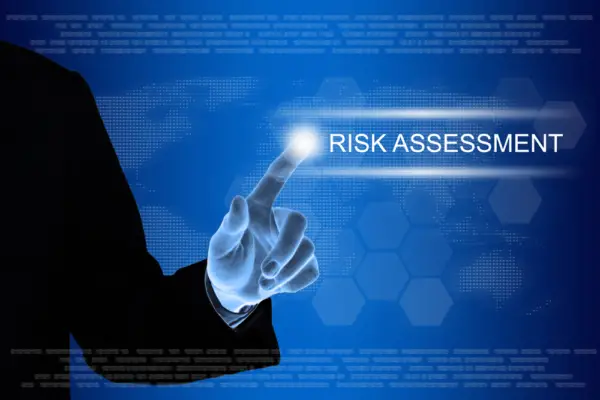Software development projects are becoming increasingly complex, and with complexity comes the potential for risks. Risks can arise at any software development life cycle stage, from requirements gathering to deployment and maintenance. Identifying and mitigating these risks is crucial for delivering a successful project.
One approach to managing software project risks is through risk assessment. Risk assessment involves identifying potential risks, assessing their likelihood and impact, and developing strategies to manage or mitigate them.
Example of a software risk assessment and its risks.
Project: ABC Customer Relationship Management (CRM) System Upgrade
Risk Assessment Date: June 1, 2023
Risk Assessment Team: Project Manager, Lead Developer, QA Lead, DevOps Lead, Business Analysis.
Risk 1: Legacy Data Migration Issues
Probability: High (due to complex and poorly documented legacy data)
Impact: High (data is critical for CRM functioning)
Mitigation Measures: Implement a thorough data migration plan with ample time for data cleaning, mapping, and testing. Appoint experienced data migration experts for the task.
Risk 2: Inadequate User Training
Probability: Medium (new system has significantly different interfaces)
Impact: High (could hinder smooth business operations)
Mitigation Measures: Implement an extensive user training program. Create user manuals and FAQs. Provide extra support during the initial phase of software rollout.
Risk 3: Software Integration Failures
Probability: High (due to many third-party applications integration)
Impact: High (CRM needs to work seamlessly with other business applications)
Mitigation Measures: Ensure a strong API strategy and perform extensive integration testing. Involve third-party vendors if necessary.
Risk 4: Scope Creep
Probability: Medium (a complex project with many stakeholders)
Impact: Medium (can lead to project delays and cost overruns)
Mitigation Measures: Clearly define project scope, requirements, and change request process. Regularly communicate and reconfirm scope with all stakeholders.
Risk 5: Security Vulnerabilities
Probability: Medium (as it’s an internet-facing application)
Impact: High (could lead to data breaches and regulatory penalties)
Mitigation Measures: Adopt secure coding practices. Perform thorough vulnerability assessments and penetration testing. Ensure data encryption and strong access control policies.
Risk 6: Software Performance Issues
Probability: Low (based on current technology stack and architecture)
Impact: High (performance issues can hinder user experience and business operations)
Mitigation Measures: Perform load, stress, and performance testing. Monitor application performance regularly and optimize as necessary.
This article will explore an example of software risk assessment in action and discuss why it is essential for successful projects.
We will also provide tips on performing a comprehensive risk assessment covering all aspects of your software development project.

Identifying Potential Risks in Software Development
Identifying potential hazards in the software development process is a crucial step towards ensuring successful and secure project outcomes. Software development challenges can arise from various factors, including human error, technical limitations, and external threats.
Risk management techniques are essential in mitigating these risks to ensure that the software meets its functional requirements and delivers value to end-users.
Risk assessment is one of the primary risk management techniques employed during the software development process. This technique involves identifying potential risks, assessing their likelihood of occurrence, and determining their potential impact on the project’s success.
Effective risk assessments require a thorough understanding of all aspects of the software development lifecycle, including design, coding, testing, deployment, and maintenance.
Identifying potential risks in software development is an ongoing process that requires continuous monitoring throughout the entire project lifecycle.
This approach ensures that any newly identified risks can be addressed promptly before they cause significant damage to the project’s outcome.
Employing effective risk management techniques such as risk assessment throughout the software development process, organizations can reduce costs associated with rework or system failures while maintaining high levels of customer satisfaction through reliable and secure software products.
Assessing the Likelihood and Impact of Risks
Quantifying risks involves analyzing data and making predictions based on past experiences, industry trends, and expert opinions. Risk assessment includes identifying threats or vulnerabilities that may compromise software quality, integrity, confidentiality, and availability.
Risk prioritization techniques aim at establishing an order of importance for identified risks based on their likelihood and impact.
One can use quantitative or qualitative methods to assess the likelihood of a risk occurring. Qualitative methods involve assessing the probability of occurrence using subjective criteria such as low/medium/high or unlikely/possible/probable.
Quantitative methods involve using statistical tools to estimate probabilities based on historical data or simulations.
The impact of a risk can also be assessed qualitatively by considering its consequences on software functionality, user experience, reputation damage, legal implications, financial losses or other relevant factors.
Alternatively, quantitative methods can be used to estimate the monetary value of potential losses caused by specific risks.
Risk prioritization techniques help stakeholders decide which risks require immediate attention and allocation of resources. One way is to use a risk matrix that combines likelihood and impact assessments into a visual representation with different levels of severity (e.g., high risk requires immediate action).
Another approach is to use risk scoring that assigns numerical values to each risk based on predetermined criteria (e.g., severity level multiplied by probability level). A third method is to use decision trees that map out possible scenarios for each identified risk and evaluate their expected value in terms of costs or benefits.
Software risk assessment involves quantifying risks and assessing their likelihood and impact using qualitative or quantitative methods. Risk prioritization techniques enable stakeholders to rank identified risks according to their severity level and allocate appropriate resources for mitigation efforts.
Strategies for Managing and Mitigating Risks
Effective management and mitigating potential risks require implementing proven strategies that address various aspects of organizational operations, ensuring resilience and adaptability in the face of uncertainty.
Risk management techniques involve identifying, assessing, prioritizing, and monitoring risks to reduce their impact on an organization’s goals. Proper planning for risk mitigation is essential in ensuring business continuity and minimizing disruption.
One strategy for managing risks is avoidance, which involves eliminating or reducing the likelihood of potential risk by avoiding activities that may lead to negative outcomes. For example, a company can decide not to pursue a particular project if it presents substantial financial or reputational risks.
Another strategy is transfer, which involves transferring the risk to another party through insurance policies or contractual agreements. This approach ensures that an organization is protected against unforeseen circumstances.
Finally, organizations can opt for risk reduction by implementing measures such as contingency plans or backup systems that mitigate the impact of a risk when it occurs.
A well-designed contingency plan outlines steps to be taken when faced with unexpected events such as natural disasters or cyber-attacks. The backup system provides redundancy in critical areas such as IT infrastructure and data storage facilities.
Effective risk management techniques require proper planning for risk mitigation through various strategies such as avoidance, transfer or reduction measures.
Example of Software Risk Assessment in Action
In the real world, challenges are constantly present in software development projects. As such, organizations must conduct software risk assessments that identify vulnerabilities and risks early in the development process.
A software risk assessment typically involves identifying potential threats to a system, analyzing their likelihood and impact, and developing mitigation strategies to address them. This allows organizations to prioritize their efforts towards addressing the most critical risks first.
Organizations can ensure that their systems remain secure and reliable by conducting regular assessments throughout the software development lifecycle.
Lessons learned from previous software risk assessments show that proactive identification of potential risks is crucial for effective risk management.
Organizations should continuously monitor their systems for new vulnerabilities and review their existing policies and procedures to ensure they remain up-to-date with current best practices.
Importance of Software Risk Assessment for Successful Projects
Implementing comprehensive risk management strategies is integral to the success of software development projects. Software risk assessment allows organisations to identify potential vulnerabilities and threats early on in the process, thus enabling them to prioritize their efforts towards mitigating them. Benefits include:-
Risk Identification: Risk assessment helps to identify potential risks early in the project. This can range from technical risks (like integration problems or potential security vulnerabilities) to project management risks (like scope creep or resource shortages).
Risk Prioritization: Once risks are identified, they can be ranked based on their likelihood and potential impact. This helps the project team focus on mitigating the most significant risks first.
Risk Mitigation Planning: Appropriate mitigation strategies can be developed after identifying and prioritising risks. This may involve allocating additional resources, changing technical approaches, or developing contingency plans.
Budgeting and Scheduling: Understanding potential risks can contribute to more accurate budgeting and scheduling. For example, if there’s a high risk of integration issues, you can plan extra time and resources to address this.
Stakeholder Communication: A risk assessment provides a framework for communicating potential issues to stakeholders. By presenting a clear picture of potential risks and how they are managed, stakeholders can make informed decisions and have realistic expectations about the project.
Improves Quality: By addressing potential risks proactively, the final product’s quality is often improved. This can lead to higher user satisfaction, fewer bugs, and lower maintenance costs.
Avoids Surprises: Perhaps most importantly, risk assessment helps avoid surprises. While it’s not possible to predict every issue that might come up in a software project, a thorough risk assessment can greatly reduce the likelihood of unexpected problems derailing the project.
Legal and Compliance Issues: For some projects, risk assessments may also help identify potential legal and compliance issues. This can be particularly important for projects dealing with sensitive data, where breaches could lead to significant penalties.
The benefits of software risk assessment include improved decision-making, better resource allocation, and increased stakeholder confidence.
Best practices for software risk assessment involve:
- Defining clear objectives.
- Identifying potential risks.
- Assessing the probability and impact of each identified risk.
- Developing mitigation strategies.
- Implementing those strategies promptly.
- Monitoring the effectiveness of those strategies regularly.
Maintaining a log that records all identified risks and their corresponding mitigation plans is also important. This helps ensure that potential risks are not overlooked or forgotten during later stages of development.
Software risk assessment plays a critical role in the success of software development projects by providing organizations with insights into potential vulnerabilities and threats early in the process.
The benefits of effective software risk assessment are numerous- improved decision-making, better resource allocation, and increased stakeholder confidence – but require strict adherence to best practices such as defining clear objectives and maintaining detailed logs recording all identified risks.

Frequently Asked Questions
What are the common challenges faced during the software risk assessment process?
Risk assessment is a crucial process for any organization to ensure the safety and security of its assets. However, several common challenges faced during the software risk assessment process can hinder its effectiveness.
One of the anticipated objections is the complexity of identifying all potential risks, as it requires extensive knowledge and experience in the field.
To mitigate this challenge, organizations can incorporate risk management tools such as threat modelling, which helps identify potential threats early in development.
Additionally, having effective risk mitigation strategies in place can help minimize the impact of identified risks on an organization’s operations.
A thorough and organized approach to software risk assessment ensures that all possible risks are considered and addressed appropriately to minimize any potential harm or damage to an organization’s assets.
How do you prioritize risks identified during the assessment?
Prioritizing risks identified during the software risk assessment process involves utilizing various risk analysis techniques to determine each risk’s likelihood and potential impact.
This enables organizations to focus on addressing high-priority risks with appropriate risk mitigation strategies aimed at first reducing or eliminating the most significant threats.
Some common risk analysis techniques include probability and impact matrices, risk rating scales, and scenario analysis. Each technique has its strengths and weaknesses, but a combination of these methods can provide a comprehensive overview of the risks faced by the organization.
Once risks have been prioritized, organizations can develop effective risk mitigation strategies that align with their risk management objectives and ensure they allocate resources appropriately to address high-priority risks promptly.
What are some common misconceptions about software risk assessment?
One common misconception is that software risk can be eliminated through rigorous testing and quality assurance measures. However, this fails to account for the fact that risks can arise at any stage of development, and testing may not uncover all potential issues.
Another misconception is that focusing solely on technical risks is sufficient, ignoring other important factors such as organizational or environmental risks.
It’s crucial to have a comprehensive approach to risk assessment that includes identification, analysis, prioritization, and mitigation strategies tailored to each context.
How often should a software risk assessment be conducted during the development process?
The frequency of software risk assessment during the development process is a crucial aspect that requires careful consideration.
It is important to conduct regular assessments to identify potential risks and vulnerabilities in the software system, which may arise due to changes in requirements, design, or implementation.
The frequency of these assessments should be determined based on the complexity and criticality of the software project. For instance, a high-risk project requires more frequent assessments than a low-risk one.
Neglecting to conduct regular software risk assessments could lead to serious consequences such as financial loss, reputation damage, and even legal liabilities in certain cases.
What role does stakeholder involvement play in software risk assessment?
Stakeholder communication plays a crucial role in software risk assessment. Effective communication channels facilitate the understanding of the project goals and objectives and ensure that all stakeholders are aware of any potential risks that may arise during the development process.
Furthermore, stakeholders can provide feedback on prioritising and addressing identified risks, helping organizations allocate resources efficiently.
Therefore, stakeholder involvement is critical for successful software risk assessment and management.

Conclusion
In conclusion, software risk assessment is a crucial step in ensuring the success of any software project. Identifying potential risks and assessing their likelihood and impact can help developers and project managers proactively manage and mitigate them.
One effective risk management strategy is prioritising them based on their severity and likelihood. This allows developers to focus their efforts on the most critical areas while also taking steps to address lower-risk issues. Additionally, creating contingency plans can help mitigate the impact of potential risks should they occur.

Chris Ekai is a Risk Management expert with over 10 years of experience in the field. He has a Master’s(MSc) degree in Risk Management from University of Portsmouth and is a CPA and Finance professional. He currently works as a Content Manager at Risk Publishing, writing about Enterprise Risk Management, Business Continuity Management and Project Management.

